Back Garden Ideas Ireland: Transform Your Outdoor Space
Creating a beautiful back garden in Ireland can be a rewarding project that transforms your outdoor space into a personal haven. With the right ideas, your garden can flourish, providing you with a tranquil spot to relax or a vibrant area to entertain friends and family. Whether you have a small yard or a spacious back garden, there are numerous creative possibilities to explore.

What kinds of back garden ideas will make the most of your space and the unique Irish climate? From picking the perfect plants that thrive in local conditions to designing charming seating areas, this article will guide you through various inspiring ideas to help you make the most of your garden. Whether you’re new to gardening or an experienced green thumb, there’s something here for everyone.
1) Vertical Garden Planters

Vertical garden planters are a wonderful way to maximize your gardening space, especially in small back gardens in Ireland. You can make use of your walls or fences and grow plants vertically.
Consider using upcycled materials like wooden pallets to create an upcycled palette garden. This idea is not only eco-friendly but also adds a rustic charm to your garden.
Another idea is to use slat walls for adding planters. This setup allows you to easily change the look of your garden and give you extra space for more plants. Slat walls are perfect for small spaces.
2) Raised Vegetable Beds
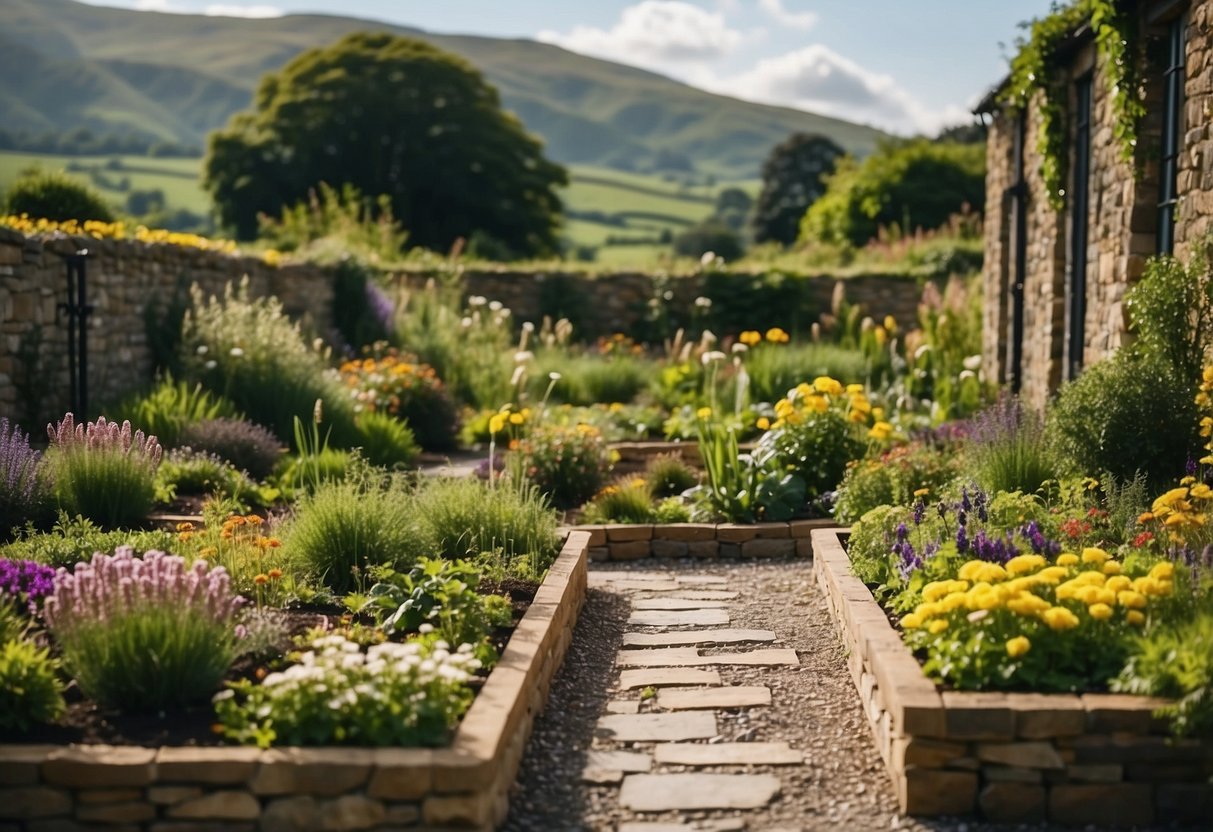
Raised vegetable beds are a great option for your back garden in Ireland. They help keep your garden neat and provide a striking look to your outdoor space. You can easily manage weeds and pests, making gardening more enjoyable and less of a chore.
Many types of vegetables thrive in raised beds. You can grow kale, carrots, tomatoes, and cucumbers with ease. Rotating crops with the changing seasons ensures a diverse and continuous harvest.
Building your own raised beds can be simple. Use materials like old scaffolding planks or salvaged timber. For convenience, 4ft square beds are ideal, as you can reach the center from every side. Raised beds improve drainage, offering a perfect environment for roots to thrive.
3) Hanging Baskets with Flowers
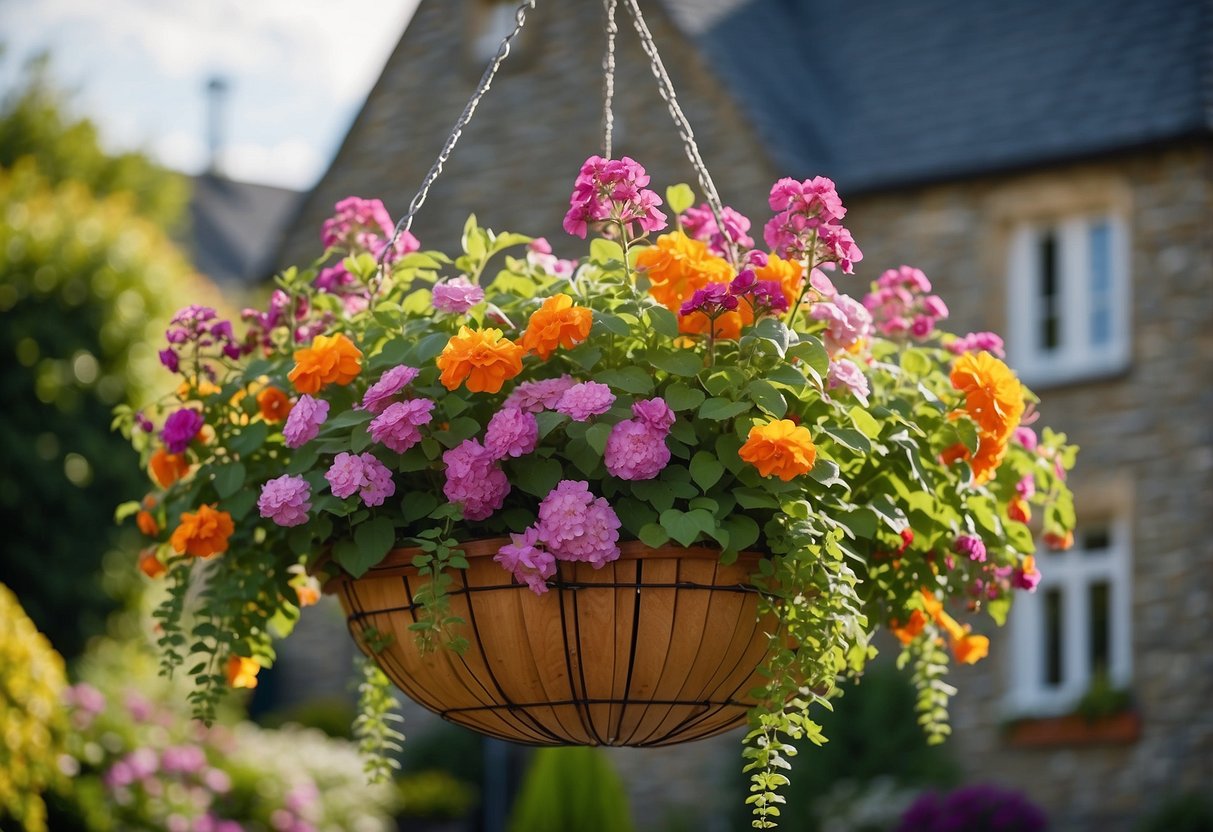
Hanging baskets are a wonderful addition to any back garden in Ireland. They add color and life to otherwise unused spaces like walls and fences.
Consider planting lobelia for its beautiful blue, white, or purple shades. It’s a popular choice and grows well in full sun.
Bidens and sanvitalia are also great options for a pop of yellow. These trailing plants cover the basket, creating a ball of color.
Regularly water and feed your baskets to keep them vibrant. Trim and remove dead heads to prolong their beauty.
4) Garden Water Features
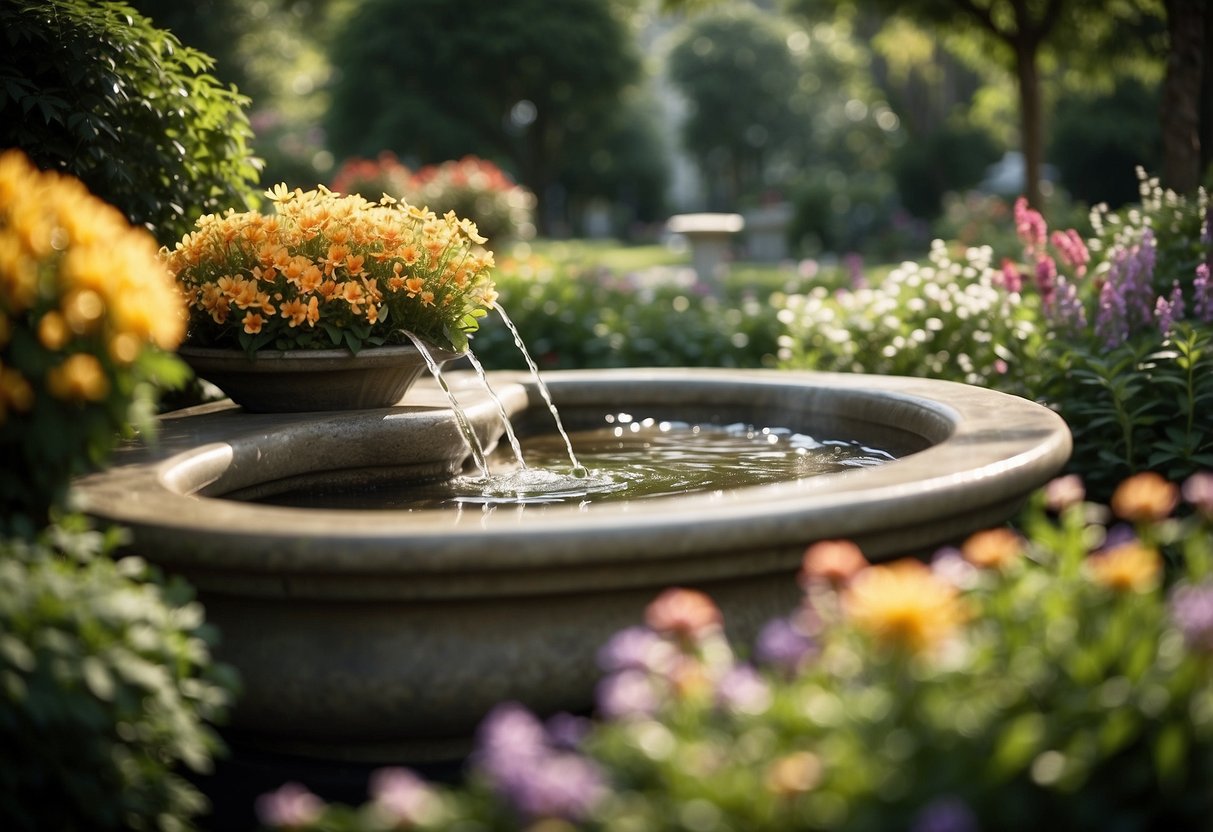
Adding a water feature can make your garden feel more serene. You might consider a small pond or a bubbling fountain. These elements attract birds and butterflies, making the space lively.
Simple options like stone or ceramic bowls filled with water also work. If you prefer something more modern, a sleek steel or patinated bronze fixture could be perfect.
For a natural touch, use waterfalls or streams. Integrating water into your garden design, like these ideas, can make a big impact without needing a lot of room.
5) Outdoor Fire Pit
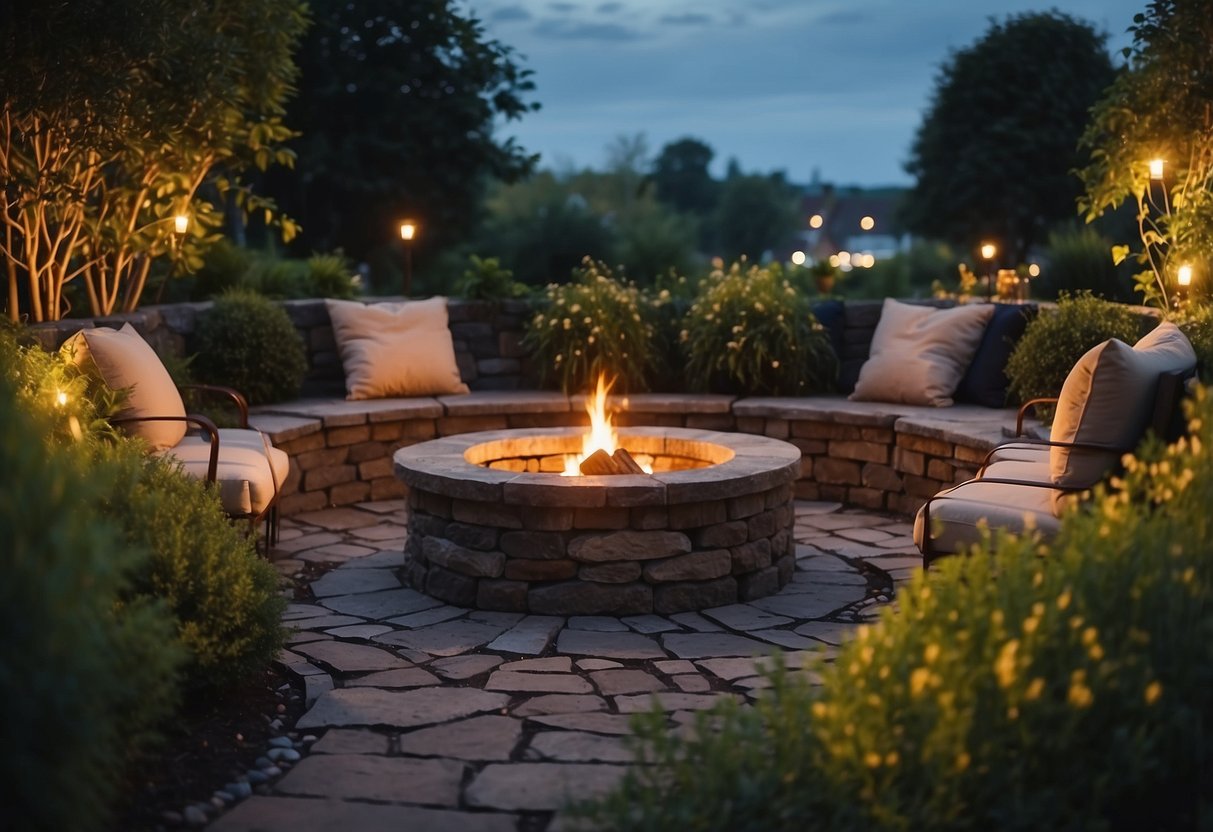
Adding an outdoor fire pit to your back garden is a fantastic way to create a cozy gathering spot. Arrange seating around the fire pit for a welcoming atmosphere where friends and family can relax.
Consider using drought-tolerant plants like succulents and cacti around the fire pit. This not only adds texture but also serves as a natural barrier. For more ideas, check out these landscaping tips.
Enhance the space further with a pergola. It provides shade and shelters your fire pit area, making it perfect for enjoying in all weather. Find inspiration here.
6) Mossy Stone Pathways

Mossy stone pathways can add a magical touch to your back garden. The mix of green moss and rugged stone creates a natural, inviting look.
Large moss rocks make excellent liners for pathways with steps, guiding you through your garden. You can also use moss to fill the gaps between larger stones for a cohesive appearance.
In Ireland, these pathways are often found winding through lush greenery, giving your garden a serene, timeless feel.
7) Climbing Roses on Trellis

Climbing roses add elegance to any garden. These roses can grow beautifully on a trellis, creating a stunning focal point.
Pick a spot that gets plenty of sunlight. This ensures your climbing roses will flourish.
Use a solid trellis structure. For ideas, check out these DIY rose trellis ideas.
Make sure to regularly water and prune your roses. This keeps them healthy and looking their best.
Support your garden’s beauty with climbing roses on a trellis.
8) Herb Spiral Garden

A herb spiral garden is a wonderful way to grow a variety of herbs in a small space. You can use materials like stones, bricks, or wooden logs to build the spiral. The center is the highest point and spirals outward, creating microclimates.
Plants like rosemary and thyme thrive at the top where it’s drier. In the lower, more shaded areas, you can plant herbs like parsley and chives. This design not only looks lovely but also makes it easy to harvest fresh herbs for your cooking.
Learn more about constructing a herb spiral garden from Balcony Garden Web.
9) DIY Birdhouses

Building a birdhouse is a fun project for your back garden. Start by choosing a sheltered location in your garden. Use a sturdy piece of wood to cut out the panels.
Paint your birdhouse with exterior primer and seal it with an exterior sealant to protect it from the elements. Adding a perch like in the $3 DIY Birdhouse Plan can attract more birds.
For a cozy option, consider building a House Sparrows Box that accommodates up to three breeding pairs.
10) Recycled Planter Ideas

Bring new life to old items with recycled planter ideas. Use an old milk jug to create a cute, DIY planter. Simply cut the top off, add soil, and plant your favorite flowers.
Repurpose a galvanized tub as a rustic garden container. It’s perfect for holding vegetables or herbs.
Consider turning a broken patio chair into a unique plant holder. Place a pot where the seat used to be and watch your garden flourish. For more inspiration, check out these beautiful upcycled planter ideas.
Design Principles for a Back Garden

Creating a back garden that is both beautiful and functional involves understanding the space you have, designing a cohesive look, and balancing aesthetics with practicality.
Understanding Your Garden Space
First, you need to know the size and shape of your garden. Measure it out, noting any unusual features. Look at how much sunlight different parts receive and observe the soil type. Climate is another big factor. For example, in Ireland, gardens tend to be wetter and shadier, which affects what plants will thrive.
Creating a layout is essential. Draw a rough sketch to visualize how you want to use the space. Place larger elements like trees or sheds first. Then, add smaller details like flower beds and walkways.
Creating a Cohesive Look
A cohesive garden has a flow that ties all elements together. Picking a theme or style helps. It could be as simple as using the same materials for paths and borders. For instance, using bluestone pavers can give your garden a consistent appearance.
Use color wisely. Choose plants that bloom at different times for continuous color. Or, stick to a color palette to avoid a chaotic look. Include elements like garden ornaments or even solar garden lights to add harmony.
Balancing Aesthetics and Functionality
The best gardens do more than look pretty; they work well too. Think about how you’ll use your garden. Do you need seating areas, space for children to play, or places to grow vegetables? Make sure every part of your garden has a purpose.
Incorporate practical features like pathways that are beautiful and functional. For wetter climates like Ireland, using gravel or stepping stones helps with drainage and reduces muddy areas. Including low-maintenance plants, such as Sagina subulata or Irish moss, is also practical.
Balance is key. Combine hardscape elements (like stone paths) with softscape elements (plants and lawns). Each element should complement the others while serving a practical role in your garden.
Growing Indigenous Plants

Planting native Irish plants in your garden brings many benefits like supporting local wildlife and creating a low-maintenance landscape. You’ll also have a variety of beautiful plants to choose from, each suited to Ireland’s unique climate.
Benefits of Native Irish Plants
Native Irish plants are ideal for your garden as they are well-adapted to the local climate and soil conditions. This makes them hardy and resilient, reducing the need for excessive watering, fertilizing, and pesticides.
These plants also play a critical role in supporting local wildlife. Birds, bees, and butterflies rely on indigenous plants for food and habitat. By planting native species, you help maintain biodiversity and contribute to a healthier ecosystem.
Moreover, native plants often have historical and cultural significance. You can enjoy a connection to Ireland’s natural heritage right in your backyard.
Popular Choices for Your Garden
Foxglove (Fairy Thimbles): This beautiful perennial has tall spikes of tubular flowers that attract pollinators. It’s a striking addition to any garden.
Irish Moss (Sagina subulata): This ground cover plant can grow between stones or pavers, adding lush greenery without much effort.
Heritage Raspberry (Rubus idaeus): This thorny shrub offers delicious raspberries in early summer and is a delight for both you and local wildlife. Read more about native Irish plants for your garden.
Planting and Care Tips
Site Preparation: Before planting, prepare your site by removing weeds and debris. This will give your plants the best start.
Planting Time: The best time to plant is between November and March when the saplings are dormant. This allows their roots to establish before the growing season begins.
Watering: While native plants are hardy, they need regular watering until they are established. After that, they often thrive on rainfall alone.
Pruning: Regularly prune your plants to encourage healthy growth and remove any diseased or dead parts. Pruning also helps maintain the shape and size of your plants.
For more details on when and how to plant, you might find this bare root planting guide helpful.
Incorporating Sustainable Practices
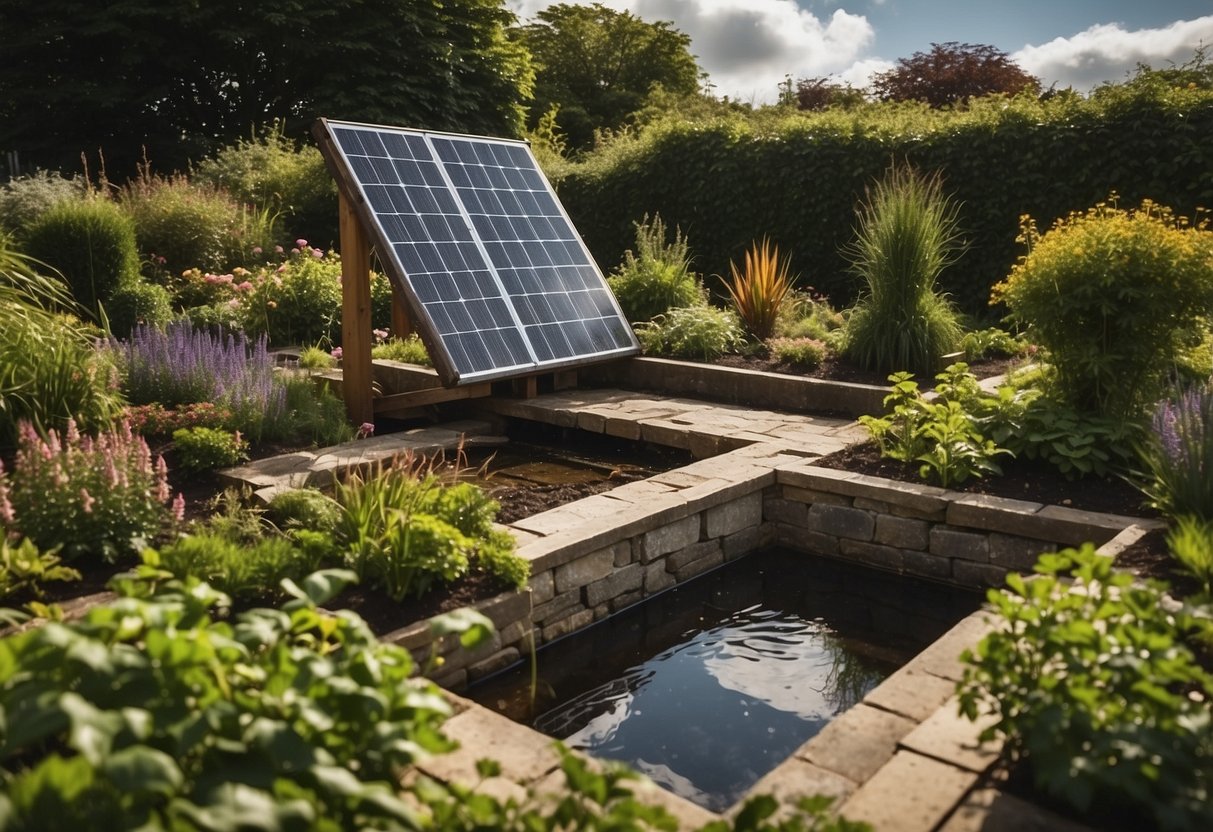
Incorporating sustainable practices in your back garden can help conserve water, improve soil health, and promote eco-friendly landscaping. This effort not only benefits the environment but also creates a healthier and more balanced habitat for both plants and wildlife.
Water Conservation Techniques
One of the key ways to practice sustainability is through effective water conservation. Collecting and using rainwater is a simple method you can implement. Install a rain barrel to gather rainwater from gutters and downspouts, then use this water for irrigating your plants.
Another technique is to design a rain garden. This involves creating a shallow depression in your garden where rainwater can naturally collect and be absorbed. This helps prevent water runoff and encourages deep-rooted plants to thrive.
You can also use mulch to cover your soil. Mulch helps retain moisture, reducing the need for frequent watering. Choose organic mulch like wood chips or straw, which decompose and improve soil health over time.
Composting and Soil Health
Composting is an excellent way to recycle kitchen scraps and yard waste. By creating a compost pile or using a compost bin, you can produce rich, organic matter that enhances soil health.
Layering greens and browns in your compost helps balance carbon and nitrogen levels. Greens include items like vegetable scraps and coffee grounds, while browns are things like dry leaves and shredded paper. A well-balanced compost pile decomposes efficiently, producing nutrient-rich soil.
Adding compost to your garden not only improves soil structure but also introduces beneficial microorganisms. This can lead to healthier plants with stronger root systems. Avoid using chemical fertilizers, which can harm these beneficial organisms and disrupt the natural balance.
Use of Eco-Friendly Materials
When designing your garden, opt for eco-friendly materials. Recycled or repurposed materials like old bricks, stones, and reclaimed wood can be used for creating garden paths, borders, or raised beds.
Choose organic pesticides and fertilizers to protect your plants from pests and diseases without harming the environment. Organic options include neem oil, insecticidal soaps, and compost tea.
Consider incorporating native plants into your garden. These plants are well-adapted to the local climate and require less water and maintenance. They also provide essential habitats for local wildlife, promoting biodiversity in your garden.
By integrating these sustainable practices, you create a back garden that is not only beautiful but also environmentally friendly.







